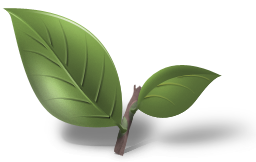I'd be careful with investing in teapots... you really need to know what you're getting and that you're getting it at the best price. Plus, there may be price fluctuations and bubbles one needs to be careful about. And in the end, teapots are not very liquid - if you need the money quickly you might not find a buyer on the spot, or you might need to undersell your collection.
What if...
Good choice! Peter manages to raise his pots very thin and the ones that survive the fire are excellent for gaoshan! Noticeably better than other wood fired pots I used before. I suspect it has to do with aforementioned thin walls!
I got three now in different sizes and they all perform similarly well. He made a custom pot for me, low profile which is very good for Dancong and Yancha!
I won't need to liquidate them anytime soon! And we've never seen a Factory 1 bubble. I don't think we will, either, as there's no going back in time for more clay! With pu erh there is always excess supply, so we do get pu bubbles.steanze wrote: ↑Sun Jan 14, 2018 7:47 pmI'd be careful with investing in teapots... you really need to know what you're getting and that you're getting it at the best price. Plus, there may be price fluctuations and bubbles one needs to be careful about. And in the end, teapots are not very liquid - if you need the money quickly you might not find a buyer on the spot, or you might need to undersell your collection.
Don’t jinx it… if all those old-timers which kept hoarding pots over the decades pass away at once, there might be quite a surplus
The one which is very popular now in Taiwan is Satoshi Nishikawa. Nice designs and some clever details like hidden airholes.ShuShu wrote: ↑Sun Jan 14, 2018 10:00 amIts interesting what you are saying about Japanese teaware. I have actually seen posts of members here who use JPN teaware to brew Gaoshan (I think it is Shigaraki clay or something).
I wonder if one of them can comment about this, type of clay, difference etc...
More than clay I was referring to things like missing knob on the lid for example which makes it difficult to control it without burning yourself. Very often the handles are designed in a way that make handling them difficult as well, again heat issues. Chahais which are impossible to hold with hot tea in them, etc... mostly due to how different Japanese green teas and Taiwanese oolongs are brewed.
Japan has a lot of different clays, but I am the wrong person to comment on that, maybe others can help?
I have heard mentioned a few times people saying that certain clays from Japan might actually be better for gaoshan than Yixing… can not recall where and who but maybe some of those knowledgeable people are hiding among us?
A lot of clay used by potters in Taiwan seems to come from Miaoli. Most of the wood-fired pots (and there are a lot of potters doing it) seem to use the same kind which you can tell by the colourings the kiln produces. It is a pretty humble clay, yellowish in its raw form. So iron content rather low I would say. The glazes also seem to do the rounds as I see similar colours in a few places. The woodfired pots I have used from several potters all perform similar, differences mostly due to shape and craftsmanship. Peter’s pot are an exception and do much better in my opinion.
Petr Novak even dug out some clay from Sunmoon lake and made few special pots from it, a nice read in one of his old blog posts!
Speaking of his work, I do seem to remember he got a piece of Yixing clay at some point and was throwing(!) one or more pots from it, so those might be the perfect testing pots to see how different they perform! Same potter, same style, just different clay!
I had similar experiences. In my experience Peter's pots worked well because they are quite thin, other pots I've tried were often too thick. But I also spent less time researching the Taiwanese teaware sceneBok wrote: ↑Mon Jan 15, 2018 3:29 amA lot of clay used by potters in Taiwan seems to come from Miaoli. Most of the wood-fired pots (and there are a lot of potters doing it) seem to use the same kind which you can tell by the colourings the kiln produces. It is a pretty humble clay, yellowish in its raw form. So iron content rather low I would say. The glazes also seem to do the rounds as I see similar colours in a few places. The woodfired pots I have used from several potters all perform similar, differences mostly due to shape and craftsmanship. Peter’s pot are an exception and do much better in my opinion.
Petr Novak even dug out some clay from Sunmoon lake and made few special pots from it, a nice read in one of his old blog posts!
Speaking of his work, I do seem to remember he got a piece of Yixing clay at some point and was throwing(!) one or more pots from it, so those might be the perfect testing pots to see how different they perform! Same potter, same style, just different clay!
